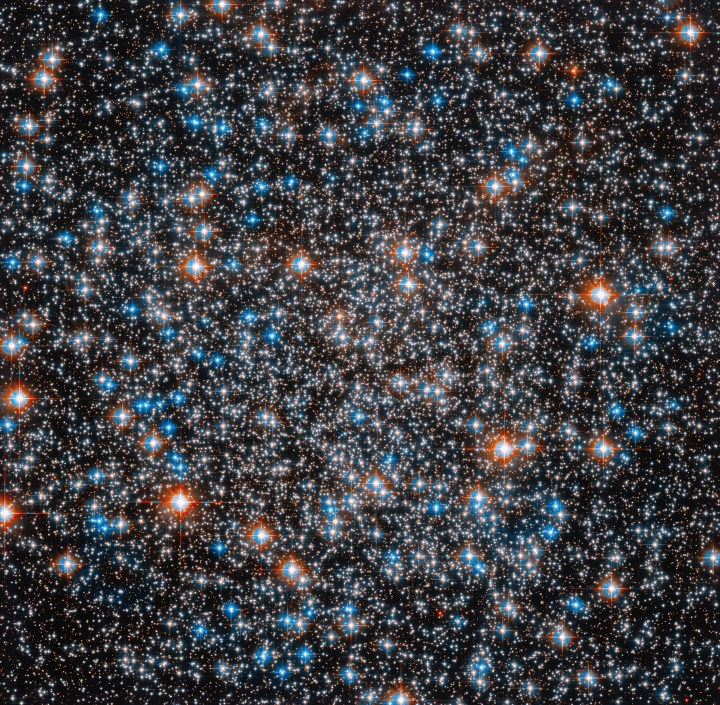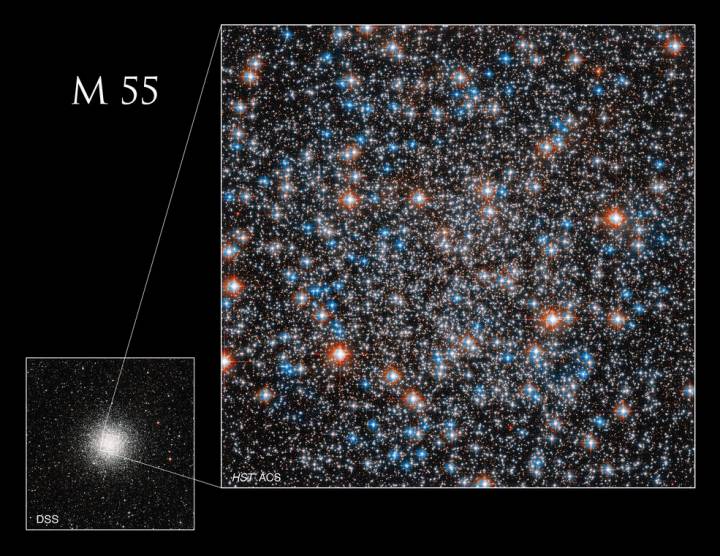A sea of stars sparkles in this image from the Hubble Space Telescope. Showing an tremendous cluster of stars called a globular cluster, this view is located in the galaxy Messier 55.
A globular cluster is a group of stars which is tens of thousands or even millions of stars, and which is held together by gravity. That’s why these clusters tend to form spherical shapes as the forces of gravity hold the cluster together.

This cluster is hard to observe from Earth as it is faint and lacks a cohesive, bright center. It also sits in a region of the sky that is low over the horizon as seen from the northern hemisphere, where interference from Earth’s atmosphere is at its strongest. But Hubble is able to observe individual stars in the cluster thanks to its position in space, where it sits above the water vapor in the atmosphere and so experiences less distortion.
This dazzling array of stars is just a small part of the Messier 55 galaxy. Located 20,000 light-years away, the cluster is around 100 light-years across and is only a fraction of the total galaxy. To give you a sense of the size of the entire galaxy, NASA has shared this graphic showing the area that the Hubble image covers compared to an image of the entire galaxy taken as part of the Digital Sky Survey.

You can also see the wider view of the Messier 55 galaxy provided by the European Southern Observatory. This wider image was part of a project which took data from a variety of astronomical surveys of the sky and created a digitized version between 1983 and 2006. Since then, a more detailed image of the galaxy has been taken using the ground-based VISTA infrared telescope which shows the distribution of stars.
As the VISTA image was taken in infrared and is presented in the visible light, the stars are all a similar shade of yellow. But because Hubble looks in the optical wavelength, it can pick out different colors of starlight. The different colors correspond to that star’s temperature.



